Wildflowers, Grasses and Other Nonwoody Plants
Media
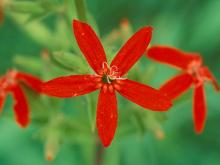
Species Types
Scientific Name
Silene regia
Description
A spectacular plant of the tallgrass prairie, royal catchfly is threatened by habitat destruction and degradation throughout its range. Missouri has most of the world's populations of this noble plant.
Media
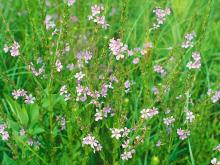
Species Types
Scientific Name
Lythrum alatum
Description
Winged loosestrife is a native Missouri wildflower that should not be confused with the nonnative invasive purple loosestrife. Learn to distinguish between the two so you can report infestations of the latter!
Media

Species Types
Scientific Name
Asclepias verticillata
Description
Whorled milkweed has rounded clusters of small white flowers. The leaves are soft, threadlike, and grow in whorls from the stem. It occurs in upland prairies and fields.
Media
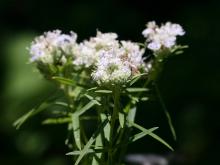
Species Types
Scientific Name
Pycnanthemum tenuifolium
Description
Slender mountain mint has smooth, square stems, opposite, narrow leaves, and dense heads of 2-lipped white (or lavender) flowers. Aromatic and minty, it can be grown at home in the herb garden, and its leaves used for seasoning food.
Media
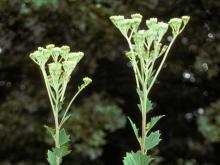
Species Types
Scientific Name
Arnoglossum atriplicifolium (also Cacalia atriplicifolia)
Description
The stout, smooth leaves of pale Indian plantain, with their glaucous-white coating beneath, look almost artificial. They are irregularly shaped, with pointed lobes. At the base of the plant, they can be 6 inches wide. They become gradually smaller up the stem.
Media

Species Types
Scientific Name
Silphium integrifolium
Description
Wholeleaf rosinweed looks like a sunflower, but its relatively small central disk of infertile florets reveals it as a rosinweed, genus Silphium. It occurs statewide.
Media
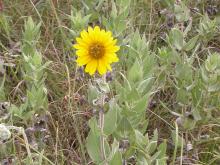
Species Types
Scientific Name
Helianthus mollis
Description
Ashy sunflower is relatively short compared to others in its genus. Its leaves are grayish, hairy, sessile, and broadly oval. Its colonies are common in upland prairies in the southern half of the state.
Media
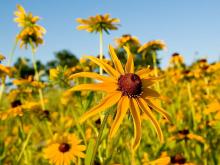
Species Types
Scientific Name
Rudbeckia hirta
Description
Black-eyed Susan is a tremendously popular native wildflower for gardening. It’s also commonly planted along roadways, so when it’s blooming, May through October, you’re sure to see it somewhere.
Media

Species Types
Scientific Name
Ratibida pinnata
Description
The “disk” of gray-headed coneflower is an inch-long, round knob. It starts off gray, but as the disk florets open and bloom, it turns brown. It grows almost statewide in prairies, glades, pastures, fencerows, and roadsides.
Media

Species Types
Scientific Name
Lobelia spicata
Description
A single-stalked perennial with white or pale blue flowers all along the top portion of the stem, spiked lobelia is most common in sunny or grassy habitats like prairies, old fields, forest openings, and glades.
See Also
About Wildflowers, Grasses and Other Nonwoody Plants in Missouri
A very simple way of thinking about the green world is to divide the vascular plants into two groups: woody and nonwoody (or herbaceous). But this is an artificial division; many plant families include some species that are woody and some that are not. The diversity of nonwoody vascular plants is staggering! Think of all the ferns, grasses, sedges, lilies, peas, sunflowers, nightshades, milkweeds, mustards, mints, and mallows — weeds and wildflowers — and many more!





















